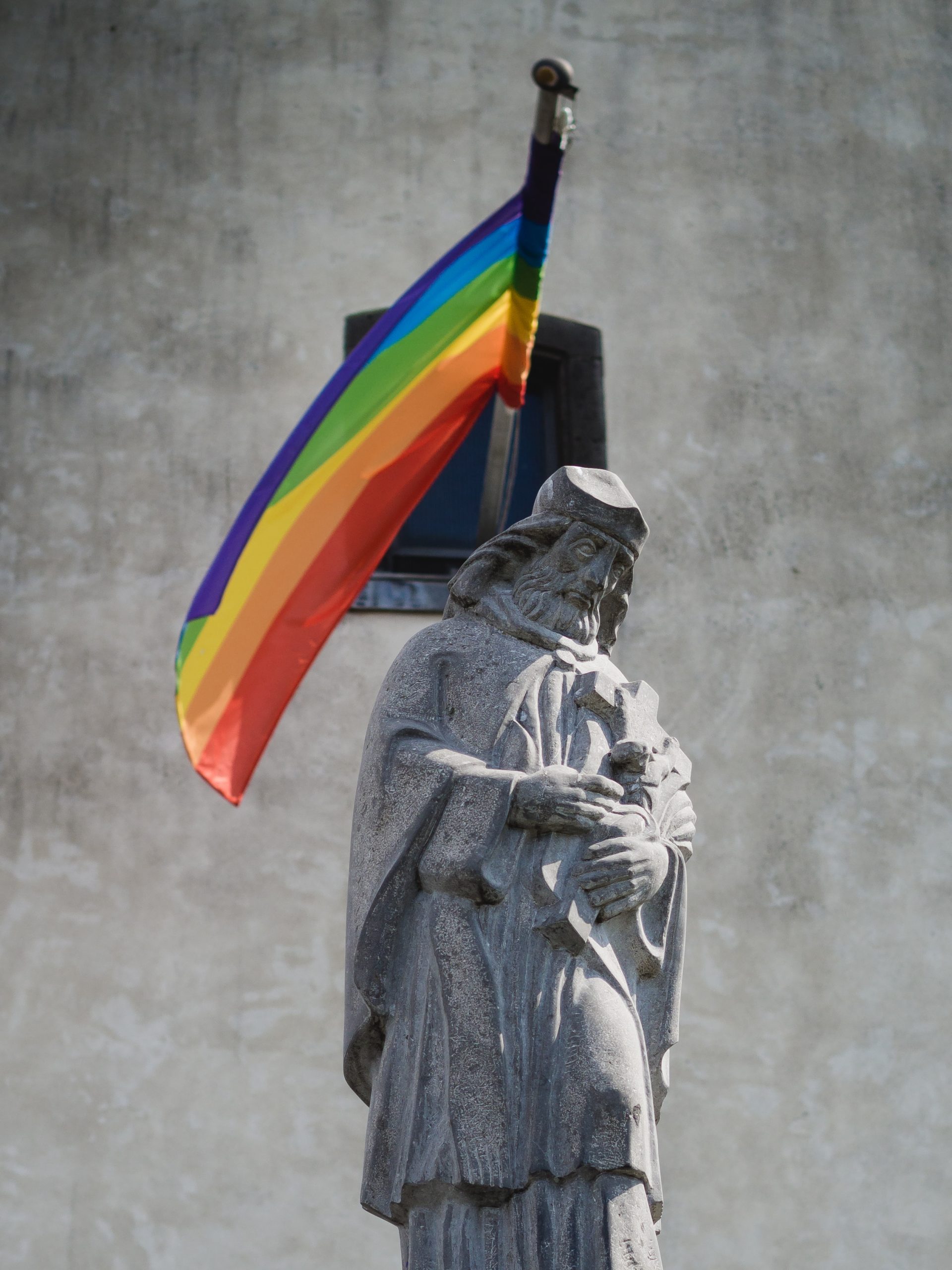Photo by Christian Krebel/Unsplash
Content warning: homophobia, religious trauma
I remember the Catholic guilt gnawing at my insides when I thought about her, when I felt butterflies flutter in my heart as I glanced at her. I remember teachers in religion classes making it clear where the Church stood on someone like me. I remember hearing about the Bible verses — the dreaded Leviticus 18:22 — and reading about sodomy in the Catechism of the Catholic Church. I remember looking up to the sky, thinking, “If this is true, why would you make me this way?”
I grew up in the Catholic Church, and I went to Catholic school from preschool all the way through high school; I’ve heard just about every argument in the book about why homosexuality is a sin or why God hates gays.
In my years of trying to reconcile my bi and queer identities with the teachings of the Catholic Church, I always came to this conclusion: there’s nothing to reconcile. Sexuality and religion can intersect in many combinations, and identifying with one doesn’t prevent you from identifying with the other. The negative relationship between religion and sexuality is a socially constructed one that holds no ground when examined under the central tenet of Church doctrine and when taking the Bible into context.
A central teaching of the faith is that God is Love. And if God is “capital L” Love, then how could They hate anyone, much less someone She created? It’s important for people who are queer and religious to know that the Church often fails to recognize the wonderful diversity of creation. God isn’t the one who is close-minded — it’s humans who can’t fully comprehend God.
My faith has always been my rock and foundation; it’s been so life-changing for me. Everyone who desires to practice religion should.
To those who left the Church or have religious trauma related to sexuality: the treatment you received was never deserved. There was never anything wrong with you. The only thing that was wrong was a religion built on love teaching a smear campaign of hate and vitriol, an institution that placed limits on who was worthy to make the people in power feel superior — to create a moral hierarchy that defies the teachings of the Creator they believe in.
While there’s nothing to reconcile between one’s sexuality and faith, there are theological arguments to refute common Christian criticisms of queer sexuality.
For instance, Leviticus 18:22 states, “Thou shalt not lie with mankind, as with womankind: it is abomination.” This is the most prevalent verse used to condemn queer sexuality, but the issue here isn’t about condemning queer sexuality — it’s an issue of translation. Leviticus 18:22 has been widely recognized by theological and linguistic scholars as a condemnation of male incestuous sexual relationships, not queer sexuality. There’s also the argument that the word “homosexual” literally appears in the Bible, but it didn’t appear until 1946 with the Revised Standard Version (RSV) of the Bible, and theological and linguistics scholars alike agree it’s once again a mistranslation.
Another common theological argument used to condemn queer sexuality centers around the idea of natural law. According to natural law, relationships should only be between man and woman because that was God’s original plan when creating Adam and Eve. In chapter 1 of Genesis, the Bible says, “So God created man in his own image, in the image of God he created him; male and female he created them” (Genesis 1:27).
But we don’t have to take the Bible literally. Rather, we can take the Bible in context.
The story of Adam and Eve is just that: a story that nobody can verify is true, meaning we don’t need to accept it as evidence for why marriage or relationships should only be observed between a man and woman.
When scrutinizing the relationship between religion and sexuality, it’s clear that the demonization of queerness by the Church is contrary to the central dogma of the Church: God is Love, and God created human beings out of love and to love. When considering how the Bible has been taken out of context and mistranslated, we see that there is no theological basis for positing identities of queerness and religiosity as inherently contradictory.
Queer people have believed in God for centuries, and queer, religious people today prove that these identities can and do coincide with one another. Whether or not you desire to have religiosity as a part of your life or not, every queer person is entitled to their beliefs and the ability to make that choice freely.
You are worthy of your life, and you deserve to make decisions that will benefit you and help you to feel more joyful moving through this world. Making decisions about one’s religious beliefs or lack thereof are no different.
To end, here are a few resources I have found helpful in deconstructing Catholicism!
- Raina Cheney, a Christian ally on Tiktok: @rainacheney
- Reverend Karla, a spiritual minister focused on deconstructing Christianity on Tiktok: @revkarla
- Beloved Arise, a Tiktok account that affirms queer youth of all faiths!: @beloved_arise
- This article that talks more about sexuality and scripture!: Sexuality and Scripture: What Else Does the Bible Have to Say? | Reflections
Credits:
Author: Mary Nassar (She/Her)
Copy Editors: Gracie Bitting (She/Her), Emma Blakely (They/She/He)

